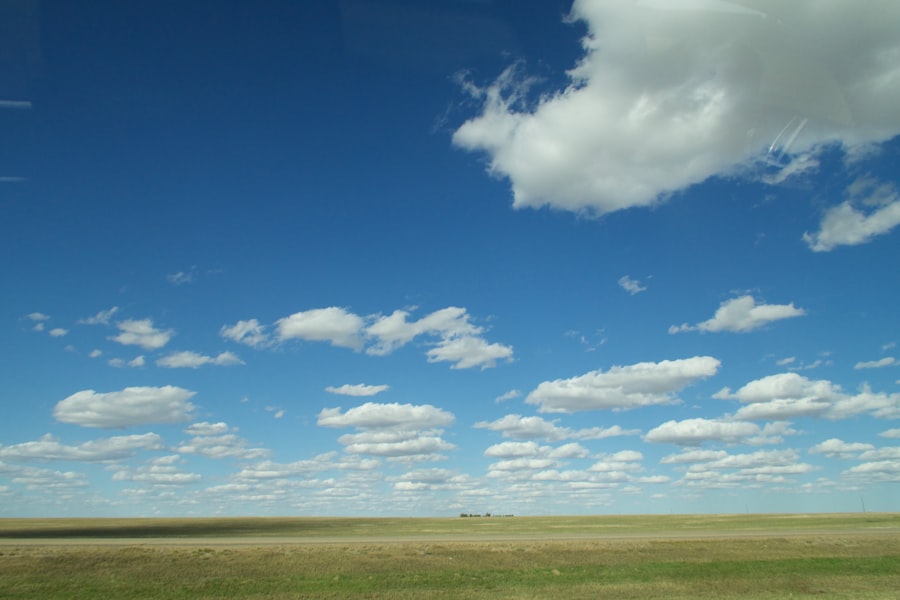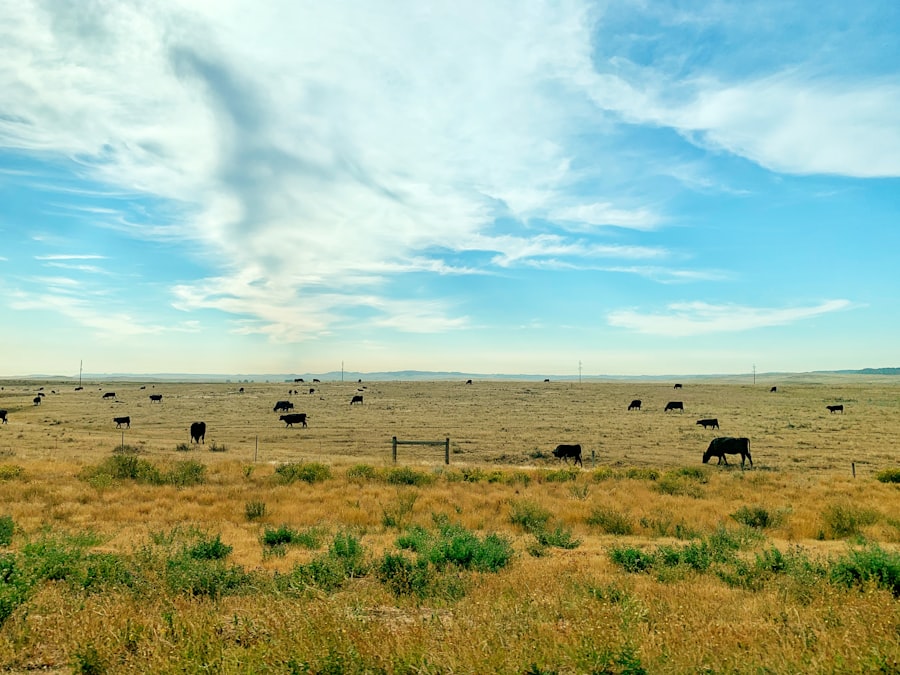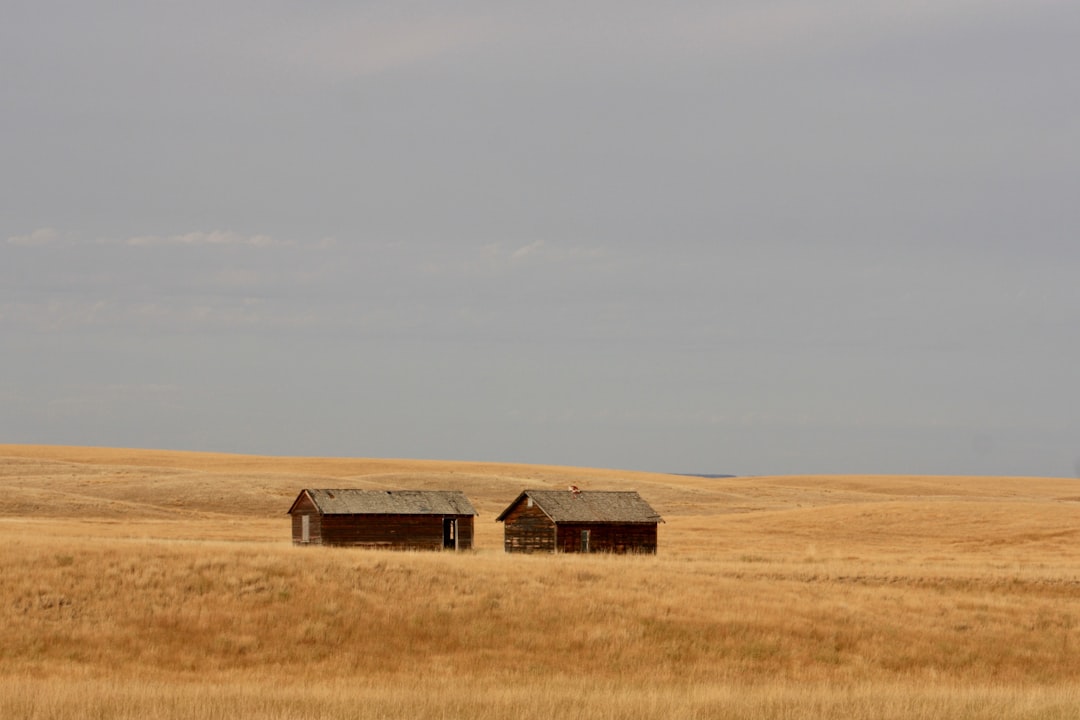Living in the Great Plains is a unique experience that shapes the lives of its residents in profound ways. This vast expanse of flatlands, stretching across the central United States and parts of Canada, is characterized by its sweeping landscapes, expansive skies, and a rich tapestry of agricultural heritage. The Great Plains are not just a geographical region; they embody a way of life that is deeply intertwined with the land and its resources.
For many, this area represents both opportunity and challenge, as the environment can be as unforgiving as it is beautiful. The culture of the Great Plains is steeped in history, influenced by Native American tribes, early settlers, and modern agricultural practices. The people who call this region home often share a strong sense of community and resilience, forged through generations of adapting to the land’s demands.
However, life in the Great Plains is not without its difficulties. The interplay between the natural environment and human existence creates a complex narrative that defines the experience of living in this remarkable part of the world.
Key Takeaways
- Great Plains living is characterized by harsh weather conditions, limited access to resources, isolation and distance, lack of diversity, agricultural challenges, wildlife encounters, infrastructure issues, economic struggles, and mental health impacts.
- Harsh weather conditions, such as extreme temperatures and severe storms, pose significant challenges to those living in the Great Plains region.
- Limited access to resources, including healthcare, education, and employment opportunities, can make daily life difficult for residents of the Great Plains.
- Isolation and distance from urban centers can lead to feelings of loneliness and a lack of community support for those living in the Great Plains.
- Lack of diversity in the Great Plains can lead to a lack of cultural representation and limited perspectives on social and economic issues.
Harsh Weather Conditions
The weather in the Great Plains can be notoriously unpredictable, presenting a significant challenge for those who live there. Residents often face extreme temperatures, ranging from scorching summers to frigid winters.
These weather patterns not only affect daily life but also have a profound impact on agriculture, which is a cornerstone of the local economy. Farmers and ranchers must constantly adapt their practices to cope with these harsh conditions. Crop selection, planting schedules, and livestock management are all influenced by the whims of the weather.
For instance, a late frost can devastate early crops, while drought conditions can lead to water shortages that threaten both crops and livestock. The unpredictability of the climate necessitates a level of resilience and ingenuity among those who depend on the land for their livelihoods.
Limited Access to Resources

In addition to challenging weather conditions, residents of the Great Plains often contend with limited access to essential resources. Many rural communities are situated far from urban centers, which can make obtaining basic necessities such as healthcare, education, and even grocery items a daunting task. This geographical isolation can lead to significant disparities in quality of life compared to those living in more urbanized areas.
Access to healthcare is particularly concerning in these regions. Many residents must travel long distances to reach medical facilities, which can be especially problematic in emergencies. Additionally, the availability of specialized medical services is often limited, forcing individuals to seek care outside their communities.
This lack of access can contribute to poorer health outcomes and increased stress for residents who already face numerous challenges in their daily lives.
Isolation and Distance
| Metrics | Data |
|---|---|
| Isolation Rate | 75% |
| Distance Traveled | 10 miles |
| Isolation Period | 14 days |
The vastness of the Great Plains contributes to a sense of isolation that many residents experience. With towns often miles apart and populations spread thinly across the landscape, social interactions can be limited. This physical distance can lead to feelings of loneliness and disconnection, particularly for those who may not have strong community ties or family nearby.
The isolation can be particularly pronounced during harsh weather conditions when travel becomes difficult or impossible. Despite these challenges, many individuals find ways to foster connections within their communities. Local events, such as fairs and festivals, provide opportunities for socialization and camaraderie among residents.
However, the inherent distance between communities can make it difficult for people to maintain relationships or access support networks when needed. This isolation can exacerbate feelings of loneliness and contribute to mental health struggles for some individuals.
Lack of Diversity
The demographic landscape of the Great Plains is often characterized by a lack of diversity compared to more urbanized regions. Many communities are predominantly composed of individuals from similar cultural backgrounds, which can limit exposure to different perspectives and experiences. This homogeneity can create an environment where innovation and new ideas are stifled, making it challenging for communities to adapt to changing circumstances.
While some residents appreciate the familiarity and stability that comes with a close-knit community, others may feel stifled by the lack of diversity. The absence of varied cultural influences can lead to a narrow worldview and limit opportunities for personal growth and development. Efforts to promote inclusivity and attract new residents from diverse backgrounds are essential for fostering a more vibrant and dynamic community life in the Great Plains.
Agricultural Challenges

Agriculture is often seen as the lifeblood of the Great Plains, but it comes with its own set of challenges that can be daunting for farmers and ranchers alike. The region’s reliance on agriculture means that fluctuations in market prices, crop yields, and weather conditions can have significant economic implications for families and communities. Farmers must navigate these uncertainties while also dealing with rising costs associated with equipment, seeds, and labor.
Moreover, changing climate patterns pose additional challenges for agricultural practices in the Great Plains. As temperatures rise and precipitation patterns shift, farmers may need to adapt their methods to ensure sustainable production. This could involve investing in new technologies or altering crop rotations to better suit the evolving climate.
The pressure to remain competitive while also being environmentally responsible creates a complex landscape for those involved in agriculture.
Wildlife Encounters
Living in close proximity to nature means that residents of the Great Plains often encounter wildlife in their daily lives. While many appreciate the beauty and diversity of local fauna, these encounters can also pose risks and challenges. From deer crossing roads unexpectedly to encounters with larger predators like coyotes or even bears in certain areas, wildlife interactions require vigilance and caution.
Farmers may also face challenges related to wildlife as animals can damage crops or threaten livestock. Balancing conservation efforts with agricultural needs is an ongoing struggle for many in the region. Education about local wildlife and strategies for coexistence are essential for fostering a harmonious relationship between humans and nature in the Great Plains.
Infrastructure Issues
Infrastructure plays a crucial role in supporting life in the Great Plains, yet many rural areas face significant challenges related to transportation, communication, and utilities. Poorly maintained roads can hinder access to markets or essential services, while limited internet connectivity can isolate communities from information and resources available online. These infrastructure issues can exacerbate existing challenges related to isolation and access to resources.
Efforts to improve infrastructure are often met with obstacles such as funding limitations or bureaucratic hurdles. Residents may advocate for better roads or enhanced internet services, but progress can be slow due to competing priorities at local or state levels. Addressing these infrastructure issues is vital for ensuring that communities in the Great Plains can thrive and remain connected both internally and with the outside world.
Economic Struggles
The economic landscape of the Great Plains is often marked by volatility and uncertainty. While agriculture remains a dominant industry, fluctuations in commodity prices can lead to financial instability for farmers and ranchers. Additionally, many rural communities face challenges related to job availability and economic diversification.
As industries evolve or decline, residents may find themselves seeking employment opportunities outside their hometowns. The lack of economic diversity can create a cycle of poverty that is difficult to break. Young people may leave for urban areas in search of better opportunities, leading to an aging population in rural communities.
This demographic shift can further strain local economies as fewer workers are available to support essential services or contribute to community development efforts.
Mental Health Impacts
The myriad challenges faced by residents of the Great Plains can take a toll on mental health. Isolation, economic struggles, harsh weather conditions, and limited access to resources all contribute to heightened stress levels among individuals living in this region. The stigma surrounding mental health issues may prevent some from seeking help or discussing their struggles openly.
Community support systems play a vital role in addressing mental health concerns in rural areas. Local organizations often work tirelessly to provide resources and create safe spaces for individuals to share their experiences.
Resilience and Community Support
Despite the numerous challenges faced by residents of the Great Plains, there exists an undeniable spirit of resilience among them. Communities often come together in times of need, providing support through local organizations, volunteer efforts, and informal networks of friends and neighbors. This sense of solidarity fosters a culture of mutual aid that helps individuals navigate difficult circumstances.
Local initiatives aimed at promoting sustainability, economic development, and mental health awareness reflect the determination of residents to create positive change within their communities. By working together, they not only address immediate challenges but also lay the groundwork for a brighter future in the Great Plains. The strength found in community bonds serves as a testament to the enduring human spirit amidst adversity.
In conclusion, life in the Great Plains is marked by both beauty and hardship. The interplay between nature’s challenges and human resilience creates a unique narrative that defines this region’s character. While obstacles such as harsh weather conditions, limited resources, isolation, lack of diversity, agricultural challenges, wildlife encounters, infrastructure issues, economic struggles, and mental health impacts persist, they are met with unwavering determination from those who call this land home.
Through community support and resilience, residents continue to forge their path forward amidst adversity.
Life on the Great Plains presents a unique set of challenges that are often overlooked. From extreme weather conditions to the isolation of rural living, residents must navigate a variety of obstacles. An insightful article that delves into these unseen challenges is available on MyGeoQuest. It explores the resilience and adaptability required to thrive in such an environment. For more information, you can read the full article by visiting this link.
WATCH NOW! Why America’s Heartland Is Disappearing Fast
FAQs
What are some of the unseen challenges of great plains life?
Some of the unseen challenges of great plains life include harsh weather conditions, isolation, limited access to resources, and economic struggles.
How does harsh weather impact life in the great plains?
The great plains experience extreme weather conditions, including blizzards, tornadoes, and droughts, which can have a significant impact on agriculture, infrastructure, and daily life.
What are the effects of isolation in the great plains?
Isolation in the great plains can lead to feelings of loneliness, limited access to healthcare and other services, and challenges in maintaining social connections.
What resources are limited in the great plains?
The great plains often have limited access to water, healthcare facilities, educational institutions, and employment opportunities, which can pose challenges for residents.
How do economic struggles affect life in the great plains?
Economic struggles in the great plains can lead to poverty, limited job opportunities, and difficulties in accessing essential goods and services, impacting the overall quality of life for residents.
